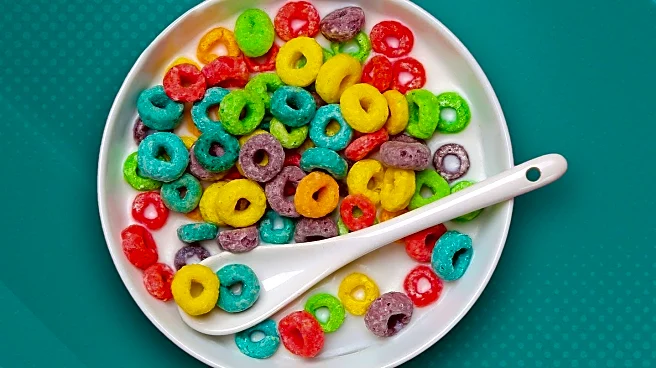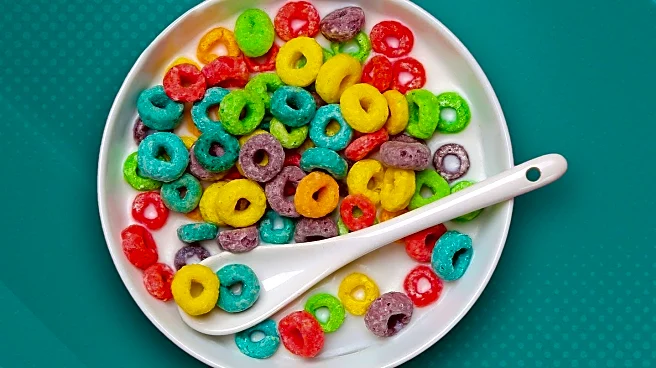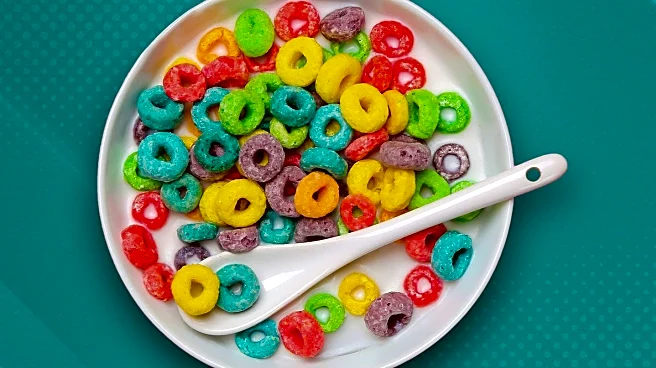What is the story about?
What's Happening?
A recent study has revealed concerning trends in the nutritional content of breakfast cereals marketed to children aged 5 to 12. Conducted between 2010 and 2023, the study found that these cereals have become sweeter, saltier, and less nutritious over time. Specifically, the sugar content in a single serving averages nearly three teaspoons, which constitutes about 45% of the maximum daily added sugar recommended by the American Heart Association for children. Consumer Reports offers guidance on selecting healthier cereals, emphasizing the importance of whole grains and lower sugar content. They suggest mixing high-sugar cereals with lower-sugar, higher-fiber options to improve nutritional balance.
Why It's Important?
The findings underscore the growing concern over childhood nutrition and the potential health risks associated with high sugar intake. Excessive sugar consumption is linked to various health issues, including obesity, diabetes, and heart disease. By highlighting these trends, the study aims to inform parents and caregivers about making healthier choices for their children. The advice from Consumer Reports can help families reduce sugar intake while maintaining a balanced diet, potentially mitigating long-term health risks and promoting better dietary habits among children.
What's Next?
Parents and caregivers are encouraged to scrutinize cereal labels more closely, focusing on ingredients and nutritional facts. Consumer Reports suggests prioritizing cereals with whole grains as the first ingredient and limiting added sugar to less than six grams per serving. Additionally, families can enhance cereal nutrition by incorporating unsweetened fruits and pairing cereals with low-fat dairy or soy milk to increase protein intake. These steps can help stabilize blood sugar levels and reduce the likelihood of overeating later in the day.
AI Generated Content
Do you find this article useful?














